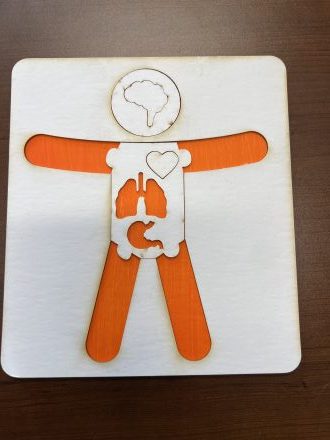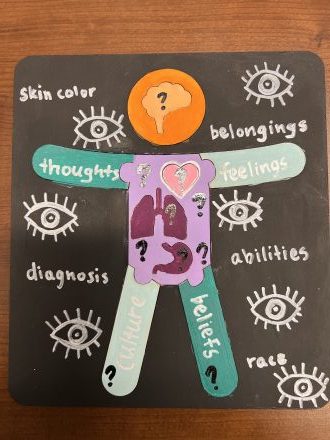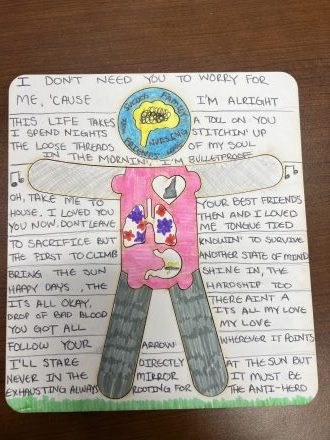The discipline of nursing is unique in its holistic approach to clients when developing a plan of care. Using an innovative approach entitled "The Puzzle Project", nursing student's in Professor Koonts NRS 2200 Health Assessment Class learned this first hand by making puzzles.
Each week during the Assessment of Health and Wellness for Nursing Practice course, Class of 2025 Bachelor’s of Science in Nursing students focus on learning to assess a different body system (respiratory cardiac, etc.) with the goal of being able to put it all together into a head-to-toe assessment.
A foundational skill and core component of nursing care, assessment knowledge and skill and the relationship of each body system to each other, can be a difficult concept for students to master. To better grasp this concept, Assistant Professor Jeanmarie Koonts established The Puzzle Project. Working with Dan Reis in the Maker Hub and supported by a grant from the Center for the Advancement of Teaching and Learning (CATL), a puzzle person template was developed and the semester-long scaffolded learning activity was born.
At the conclusion of class and lab each week nursing students “earned” a body system puzzle piece. As their assessment knowledge and skill grew in class, lab and clinical, so did their puzzle and their knowledge of the interconnectedness of the body systems to form and shape the whole person.
Once the puzzle was complete, the students were confronted with a blank puzzle person who looked exactly like their colleagues’ puzzle. To reinforce the unique nature of the clients nursing cares for, and in keeping with nursing’s holistic approach to assessment, students spent the next class periods exploring the impact of culture, spirituality, the environment and more on the clients they serve and how these influences make each client unique. To reinforce this concept, as the final step in the puzzle, students were asked to decorate their puzzles as they liked. Some decorated them in their likeness or based on a group they identified with or which they had studied.
The end result: puzzles as unique as the clients nursing cares for and a tangible reminder that the sum is more than its parts.








